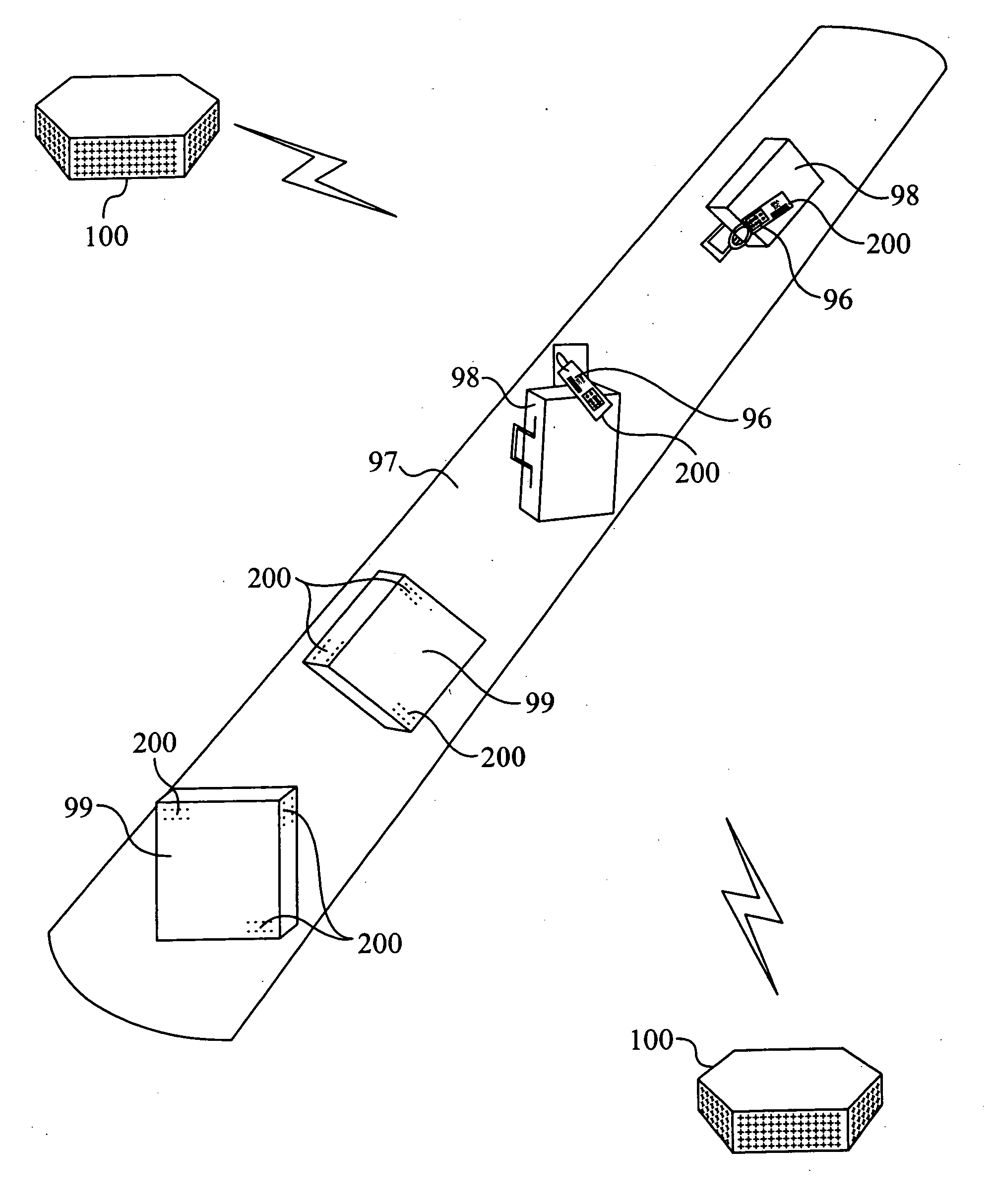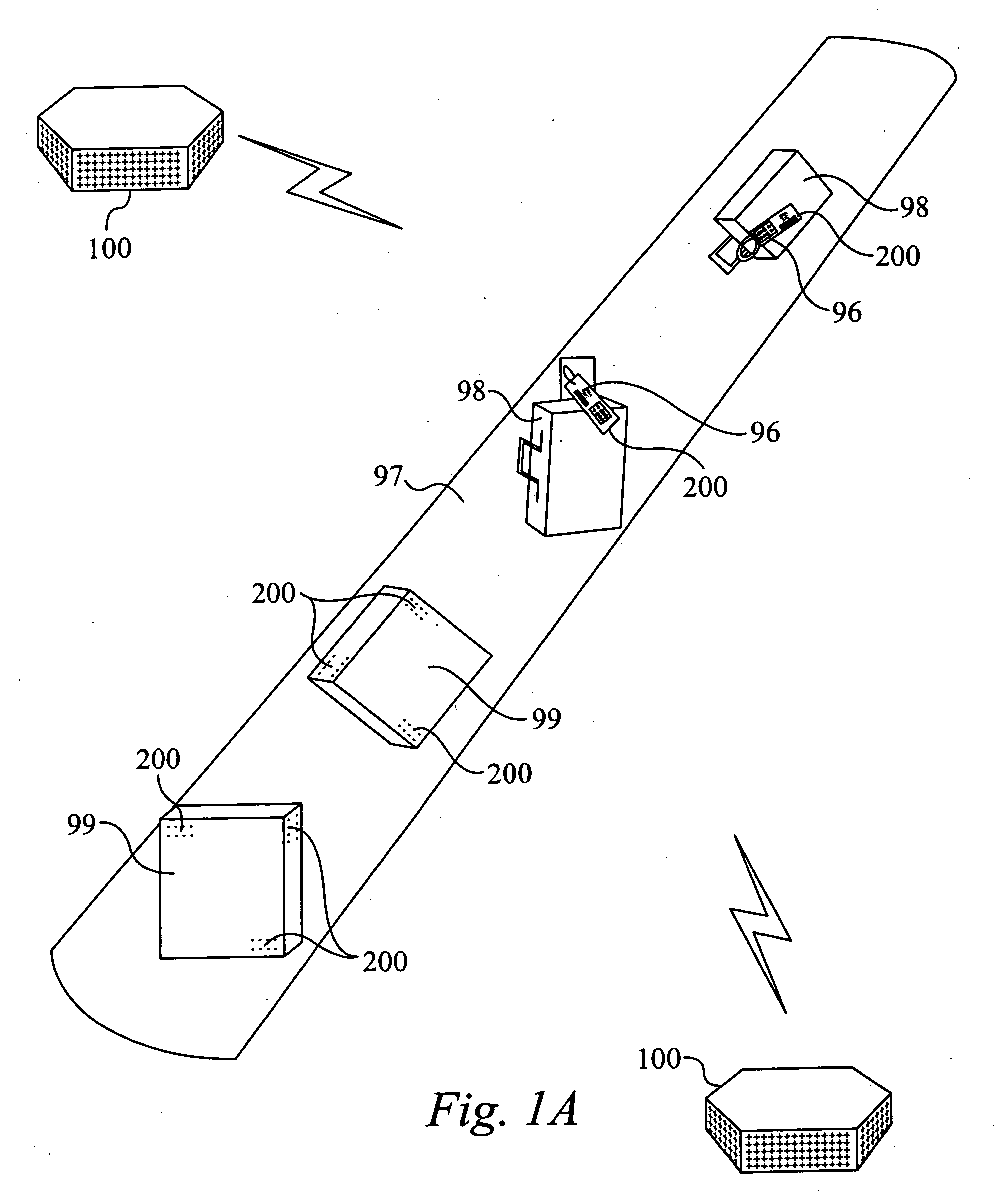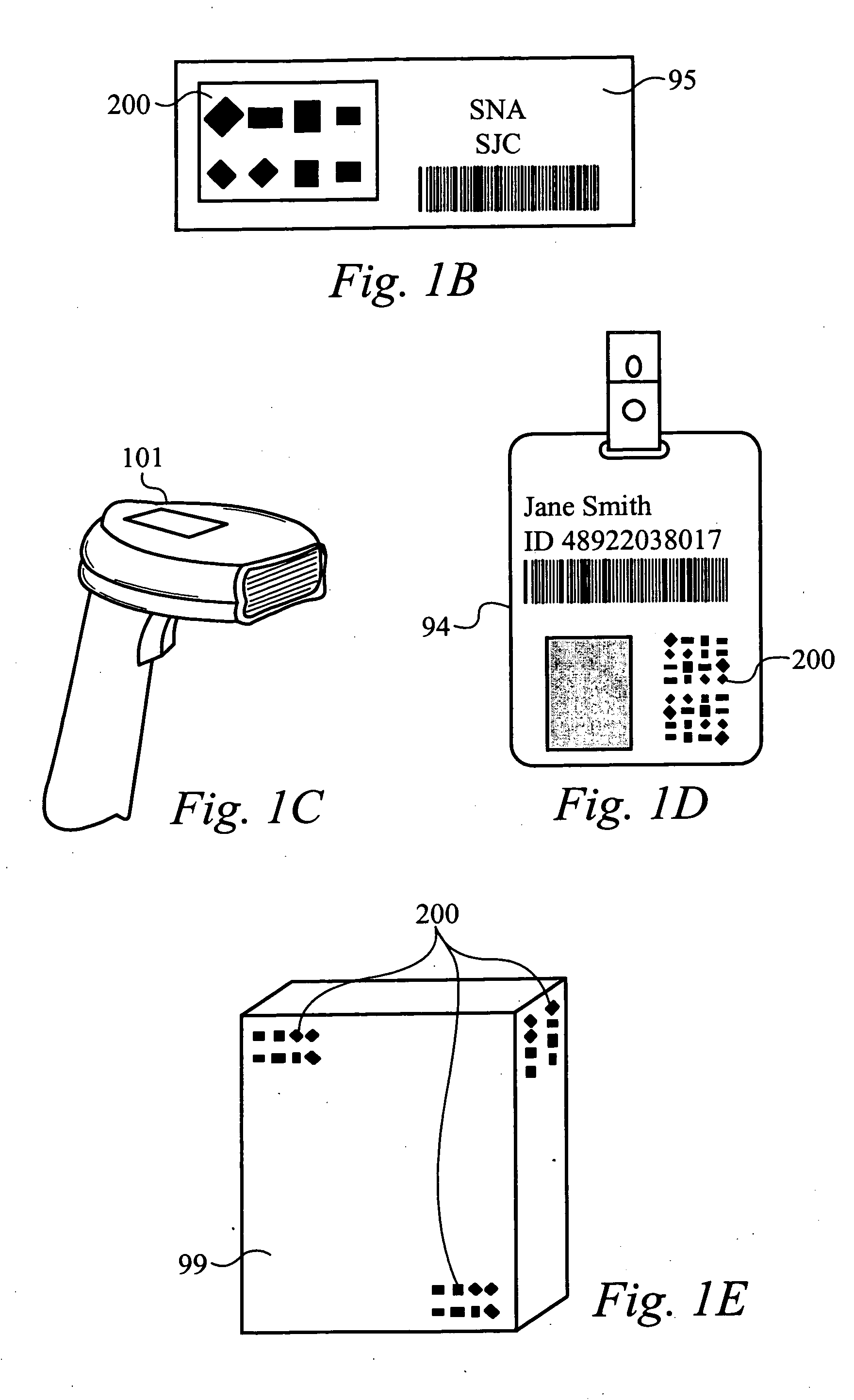RFID system utilizing parametric reflective technology
a technology of parametric reflection and rfid, which is applied in the field of radio frequency identification (rfid) interrogators and data tags, can solve the problems of increasing manufacturing costs, significant manufacturing costs of each tag, and cost associated with the chip itself, so as to reduce the aggregate read time, reduce the manufacturing cost of the tag, and the interrogator and the tag range is wide.
- Summary
- Abstract
- Description
- Claims
- Application Information
AI Technical Summary
Benefits of technology
Problems solved by technology
Method used
Image
Examples
Embodiment Construction
[0025] Embodiments of the present invention are described herein in the context of an RFID system utilizing parametric reflective technology. Those of ordinary skill in the art will realize that the following detailed description of the present invention is illustrative only and is not intended to be in any way limiting. Other embodiments of the present invention will readily suggest themselves to such skilled persons having the benefit of this disclosure. Reference will now be made in detail to implementations of the present invention as illustrated in the accompanying drawings. The same reference indicators will be used throughout the drawings and the following detailed description to refer to the same or like parts.
[0026] The present invention described herein preferably utilizes a very low cost RFID tag construction that does not require semiconductor or chip technologies. The present invention preferably can read the RFID tags at distances up to 100 meters as well as read and ...
PUM
 Login to View More
Login to View More Abstract
Description
Claims
Application Information
 Login to View More
Login to View More - R&D
- Intellectual Property
- Life Sciences
- Materials
- Tech Scout
- Unparalleled Data Quality
- Higher Quality Content
- 60% Fewer Hallucinations
Browse by: Latest US Patents, China's latest patents, Technical Efficacy Thesaurus, Application Domain, Technology Topic, Popular Technical Reports.
© 2025 PatSnap. All rights reserved.Legal|Privacy policy|Modern Slavery Act Transparency Statement|Sitemap|About US| Contact US: help@patsnap.com



